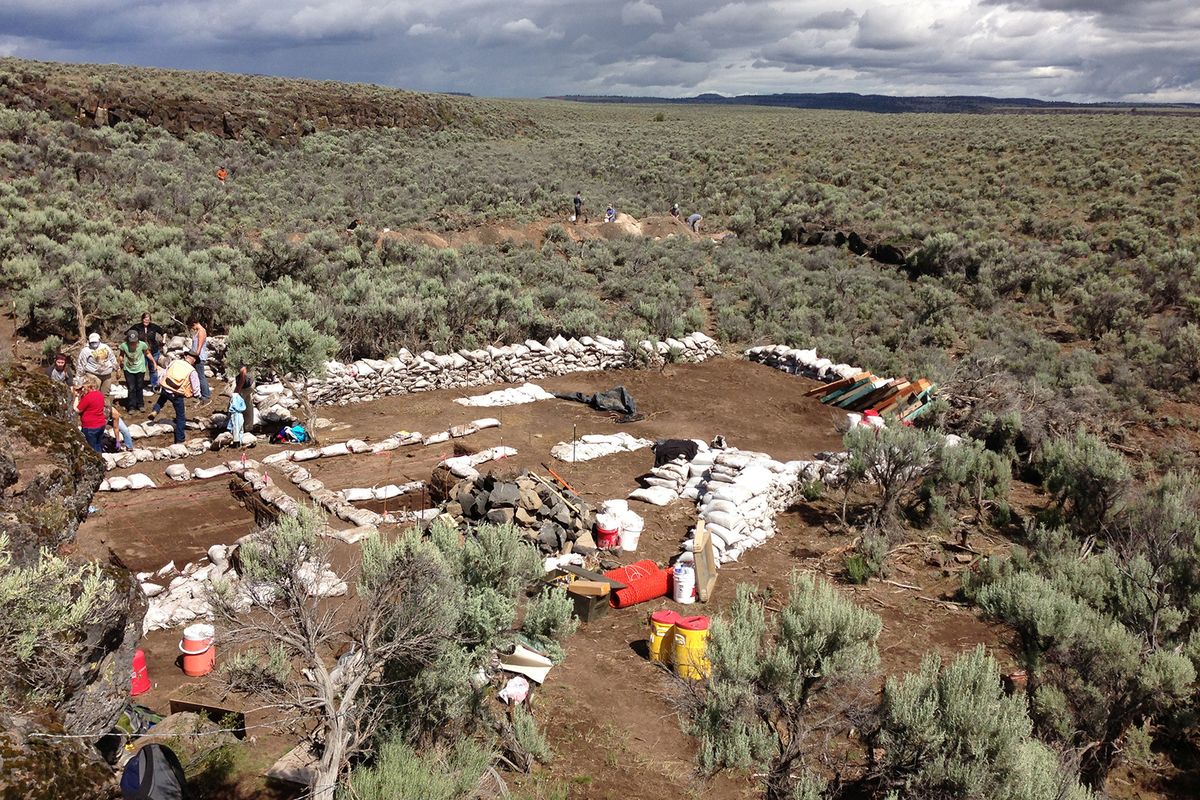Ancient tool unearthed in eastern Oregon
Agate scraper might be oldest found in West

GRANTS PASS, Ore. – Archaeologists have uncovered a stone tool at an ancient rock shelter in the high desert of eastern Oregon that could turn out to be older than any known site of human occupation in western North America.
The find was announced Thursday by the U.S. Bureau of Land Management, which controls the land on which the site was found.
University of Oregon archaeologist Patrick O’Grady, who supervises the dig, said the Rimrock Draw Rockshelter outside Riley has not been fully excavated. But the tool, a hand-held scraper chipped from a piece of orange agate not normally found in eastern Oregon, was found about 8 inches below a layer of volcanic ash from an eruption of Mount St. Helens that has been dated to 15,800 years ago. The depth was about 12 feet below the surface.
Bureau of Land Management archaeologist Scott Thomas said that if the age of the site holds up to scrutiny, it would be the oldest west of the Rockies, and another predating the so-called Clovis culture, once generally believed to be the first people to migrate from Asia into North America. The earliest Clovis artifacts, known for distinctive and elegant stone points, are dated to about 13,000 years ago.
O’Grady called the find “tantalizing,” but he added that they want to continue digging this summer to see whether the volcanic ash covers the entire area.
Donald K. Grayson, professor of archaeology at the University of Washington, said the scientific community would be skeptical.
“No one is going to believe this until it is shown there was no break in that ash layer, that the artifact could not have worked its way down from higher up, and until it is published in a convincing way,” Grayson said. “Until then, extreme skepticism is all they are going to get.”
Two pre-Clovis sites are well documented and generally accepted by scientists, Grayson said. One is Paisley Cave, located about 60 miles southwest of the Rimrock site. The other is Monte Verde in Chile. Both are dated about 1,000 years before the oldest Clovis sites.
If the date of Rimrock holds up, it would put people at the site about 1,500 years earlier, at the end of the Pleistocene era, when mastodons, mammoths, camels, horses and bison roamed the area.
The find has yet to be submitted to a scientific journal for publication, but it has been reported in newsletters and at conferences, Thomas said.
Thomas found the site several years ago, while taking a break from carrying supplies to a session of the University of Oregon Archaeological Field School nearby that O’Grady was overseeing.
Thomas said he noticed an outcropping of an ancient lava flow, with some very tall sage brush growing in front of it, indicating very deep sediment deposits. The soil was black in front of the rock, indicating someone regularly built cooking fires there for a long time. An ancient streambed ran by, which would have given people more reason to stay there. And on the surface, he found a stone point of the stemmed type, found at sites both older and younger than Clovis. Similar points have been found at Paisley Cave.
Volunteers looking around the surface found some 30 stemmed points, and the field school started excavations in 2011, O’Grady said. Uncovered above and below the volcanic ash layer were fragments of teeth believed to be from ancient camels.
Tests completed by Archaeological Investigations Northwest Inc. of Portland on blood residue on the agate scraper were consistent with the bovid family of animals, Thomas said. The most likely bovine animal living in Oregon at that time would have been an ancestor of the buffalo.